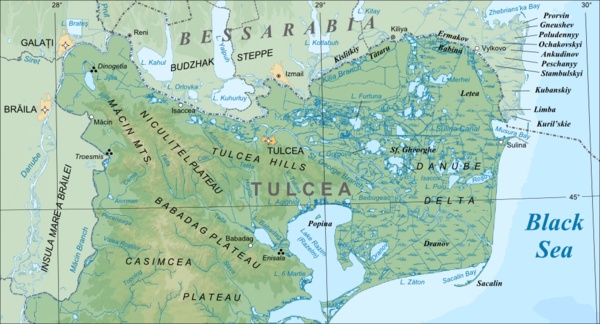The Danube Delta became In 1991, part of the UNESCO list of World Heritage Sites. Around 2,733 km2 of the delta are strictly protected areas.
In 1998, under UNESCO Programme on Man and the Biosphere, the 6264.03 km2 of Danube Delta were established as Biosphere Reserve shared by Romania and Ukraine.
Historically, in Romania, part of Danube Delta was marked as a reserve back in 1938.
In Ukraine, the Danube branch of Black Sea State Reserve was established in 1973. In 1981 it was reorganized into Natural Reserve "Danube Fluxes", and in 1998 it was extended into Danube Biosphere Reserve.
The Danube Delta falls within Pannonian steppe ecosystem of eastern Europe, with Mediterranean influences. As a young region in full process of consolidation, the Danube Delta represents a very favourable place for the development of highly diverse flora and fauna, unique in Europe, with numerous rare species. It hosts 23 natural ecosystems, but due to the extent of wetlands the aquatic environment is prevalent; the terrestrial environment is also present on the higher grounds of the continental levees, where xerophile ecosystems have developed. Between the aquatic and terrestrial environments, is interposed a swampy, easily flooded strip of original flora and fauna, with means of adaptation for water or land, depending on the season or the hydrological regime. At the contact between freshwater and sea water, some special physical, chemical and biological processes take place, which have led biologists to consider this area as a very different ecosystem called beforedelta. Musura Gulf, north of Sulina, and Saint George Gulf are considered the most representative for this type of ecosystem.
Situated on major migratory routes, and providing adequate conditions for nesting and hatching, the Danube Delta is a magnet for birds from six major eco-regions of the world, including the Mongolian, Arctic and Siberian. There are over 320 species of birds found in the delta during summer,[8] of which 166 are hatching species and 159 are migratory. Over one million individuals (swans, wild ducks, bald coots, etc.) winter here




